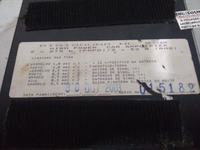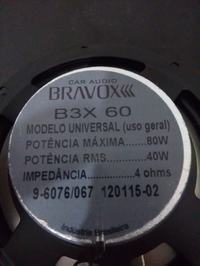Brondog
Newbie level 5
Hello,
I am rediscovering this fascinating world of electronics and DIY things recently and decided to do something with my spare time. I decided to adapt some old car speakers and an amplifier into my new PC sound. I mean, how hard can It be?
I think it will be something like this:
P2 plug -> amp -> speakers
It IS supposed to be this simple, right? I'm already reading and making the design for the boxes in which I will hold the speakers already but at the moment I'm only having trouble on one simple thing, the reason I came here to beg for your knowledge:
The Power Supply Unit!
To be honest, this is by far the hardest thing to plan (and make) in this entire little project. My speakers are 25W 4 ohm each and the amp is 2 x 52 W RMS. Since it's a dual channel so 2x 52 = 104W RMS, right? (Yeah, I know the speakers could be better but I got them for free).
So my problem here right now is how will I make a good PSU for this little guy? I've heard I can't use a SMPS (switched mode power supply) for sound aplications or there will be some noise on the signal.
The problem is that creating a 100W linear power supply will cost an absurd price with a 127V/12V at 10A transformer! The transformer will cost R$105,75 to be exact and will weight almost 3 kg!
So I was wondering: the only kind of PSU I've ever done was the common:
transformer, rectifier, capacitor, LM7812
kind of PSU. A simple linear one.
Can some good soul give me an example on how to get a cheaper yet effective project? Also, will it be okay for the PSU to be constantly working on it's limit like I'm planning it to or should I have an even more capable PSU so it will last longer?
Thank you so very much and sorry for bothering you!
I am rediscovering this fascinating world of electronics and DIY things recently and decided to do something with my spare time. I decided to adapt some old car speakers and an amplifier into my new PC sound. I mean, how hard can It be?
I think it will be something like this:
P2 plug -> amp -> speakers
It IS supposed to be this simple, right? I'm already reading and making the design for the boxes in which I will hold the speakers already but at the moment I'm only having trouble on one simple thing, the reason I came here to beg for your knowledge:
The Power Supply Unit!
To be honest, this is by far the hardest thing to plan (and make) in this entire little project. My speakers are 25W 4 ohm each and the amp is 2 x 52 W RMS. Since it's a dual channel so 2x 52 = 104W RMS, right? (Yeah, I know the speakers could be better but I got them for free).
So my problem here right now is how will I make a good PSU for this little guy? I've heard I can't use a SMPS (switched mode power supply) for sound aplications or there will be some noise on the signal.
The problem is that creating a 100W linear power supply will cost an absurd price with a 127V/12V at 10A transformer! The transformer will cost R$105,75 to be exact and will weight almost 3 kg!
So I was wondering: the only kind of PSU I've ever done was the common:
transformer, rectifier, capacitor, LM7812
kind of PSU. A simple linear one.
Can some good soul give me an example on how to get a cheaper yet effective project? Also, will it be okay for the PSU to be constantly working on it's limit like I'm planning it to or should I have an even more capable PSU so it will last longer?
Thank you so very much and sorry for bothering you!

